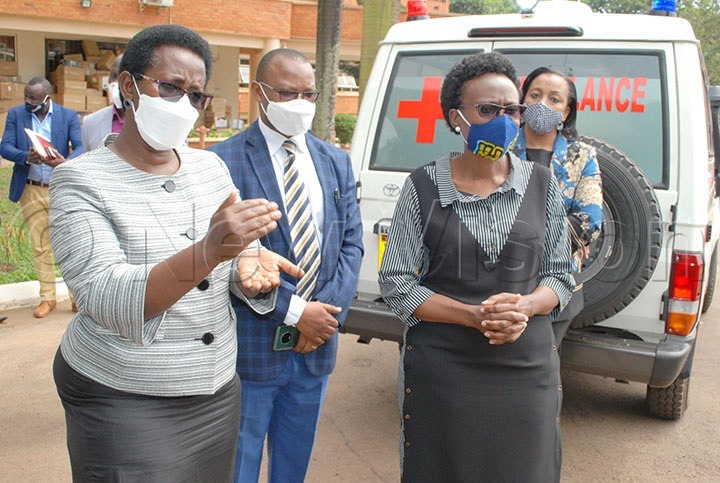Govt receives five ambulances to fight COVID 19
HEALTH
Government is providing ambulances at regional level which will be available on call to anyone who needs them.
They will be dedicated to evacuate COVID-19 cases but other patients will also benefit, health minister Dr. Jane Ruth Acheng said Thursday.
"The ambulances will not be attached to health facilities for them to own. They will be deployed per region and we will have call centers at the regional referral hospitals which have isolation facilities. They will be available to anybody in the community or along the road by calling," Acheng said.

The rollout will be phased, she added.
Meanwhile training for paramedical staff to handle emergencies is going on in Masaka and Jinja regional referral hospitals. The trainees will ensure that such patients get the care they need urgently.
Dr. Acheng was speaking during a handover ceremony of five ambulances at the Ministry of Health.
The ambulances were donated by SICPA to boost the health ministry COVID-19 response. Classified as type B, or basic life support ambulances, they are equipped with patient diagnostic, immobilisation and life support equipment. They cost $300,000 (about sh1b).
SICPA is a technology provider to the Government of Uganda and was recently contracted to implement the Digital Tax Systems, intended to improve tax collection needed to fund the government response to the pandemic.
Permanent secretary Dr. Diana Atwiine said the donation comes at a time when the health ministry has set out to strengthen emergency medical services that have been a challenge in the country, ensuring that ambulances get to everyone who needs them and also utilise them properly.
According to Dr. Atwiine the ambulances will be based in Teso, Bugishu, Karamoja, Acholi, Lango, West Nile, Bunyoro, Upper central, Busoga, Ankole, and the Metropolitan region. Each region will be allocated about 30 ambulances since they serve a minimum of eight districts.
Island regions will receive water boats
Uganda has about 235 ambulances, 178 of which are basic and are used to evacuate stable patients. However, the ministry is moving to type B ambulances which alittle more sophisticated and fitted with basic life support.
Atwiine said the ambulances have been managed by health center IVs and hospitals. However, they have been facing challenges because they do not have a dedicated budget line to track and maintain them and ascertain how much fuel they consume.
"We want to have well-coordinated emergency medical services," Atwine said. She said what is needed is streamlining management and dedicating a budget for to service and fuel the ambulances.
She said the tracking system will sort corrupt drivers who demand money for fuel from patients. "They will be easier to manage once we install a tracking system because then, we are able to know how much fuel each car has used," she said
Mrs. Suzan Kitariko, the General Manager of SICPA Uganda, said: "It gives us a lot of pleasure to be part of the struggle to fill gaps as the health ministry fights the pandemic."
Dr. Aceng said Uganda is in phase four of the COVID 19 pandemic, where community transmissions are escalating, and there is high need for ambulances to pick cases and bring them to the isolation facilities.
She said as home-based care starts, there is even more need to pick moderate-to-severe cases as quickly as possible to isolation centers.
"That is why this generous donation will go a long way to support the emergency medical services team that has been facing these challenges," she said.